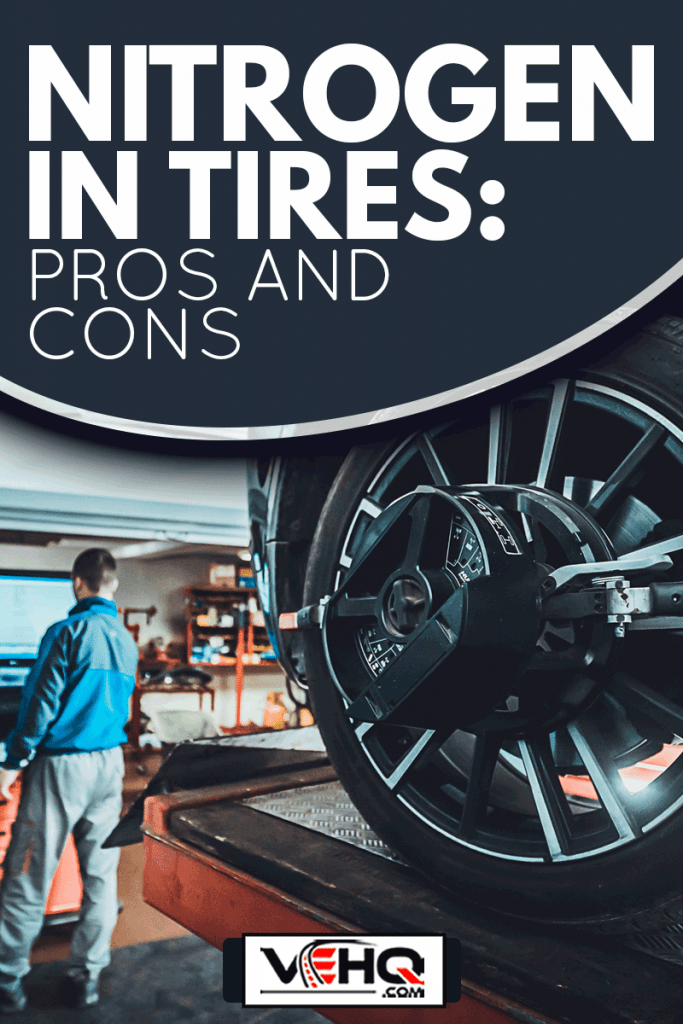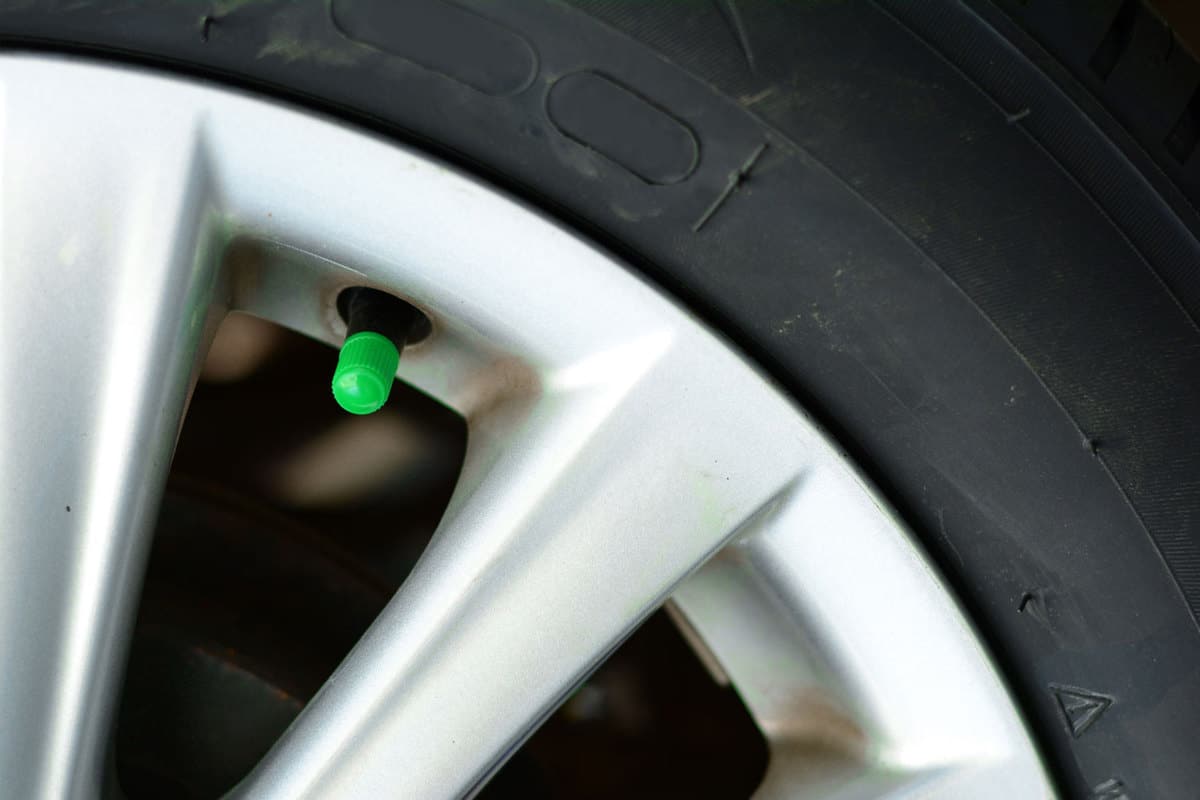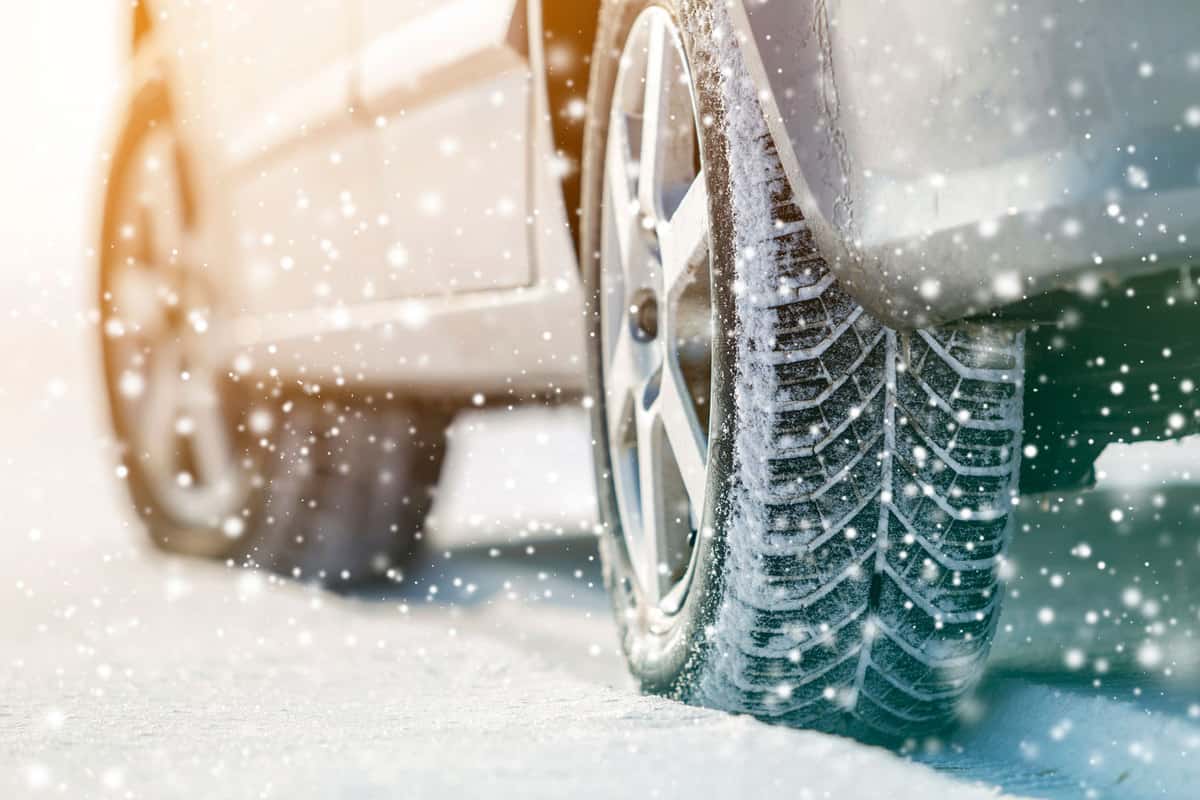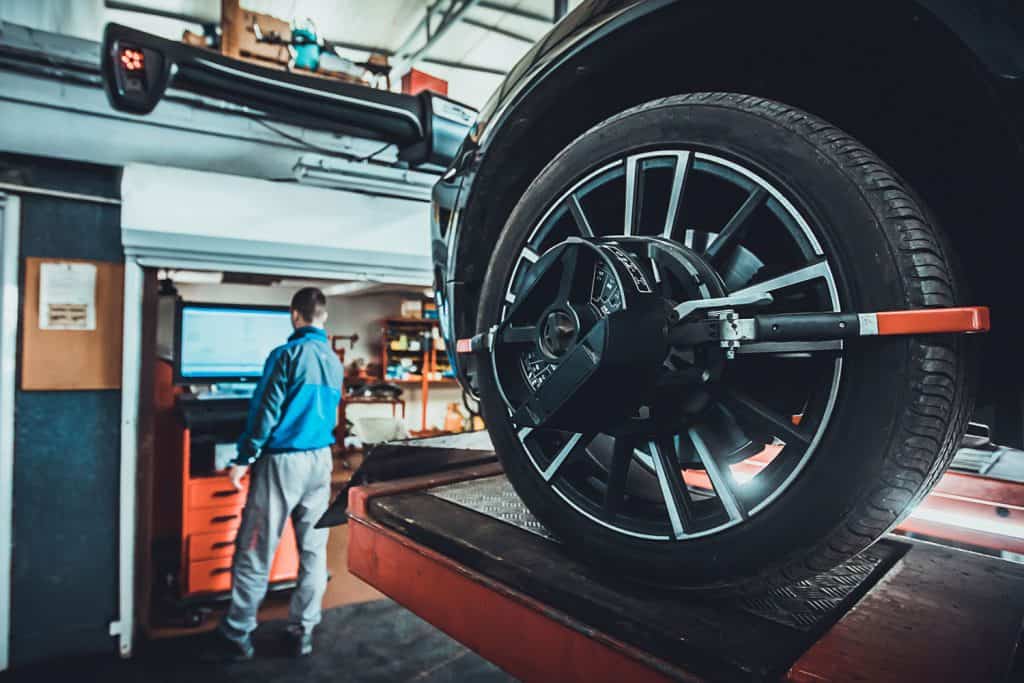Over the past few years, more and more drivers have been touting the benefits of using nitrogen in their vehicles' tires instead of ambient air. Perhaps you're thinking about trying it yourself. But you may have heard differing information about whether this strategy works. So, what are the advantages and disadvantages of using nitrogen in your tires? We've done the research, and we have the answers for you!
Proponents of using nitrogen in your vehicle's tires cite these benefits:
- Nitrogen-filled tires stay inflated longer. This means:
- better fuel economy
- easier handling
- more even tread wear
- longer tire life
- Unlike compressed air, nitrogen does not introduce water into the tires. This means:
- reduced chance of blowouts
- no tire oxidation
- no wheel oxidation
Skeptics cite two major disadvantages to using nitrogen in your tires:
- Nitrogen refills are expensive
- Nitrogen refills are not readily available
In the remainder of this article, we'll discuss each of these arguments in detail, and we'll tell you whether it's worth it to inflate your tires with nitrogen. We will also discuss whether you can mix air and nitrogen in your tires, how long you can expect a nitrogen fill to last, and whether you can fill your tires with nitrogen at home. And we'll tell you where you can go to get your tires filled (and refilled) with nitrogen. Keep reading to learn all you need to know about using nitrogen in your tires!

Nitrogen In Tires: Pros And Cons
Nitrogen-Filled Tires Stay Inflated Longer
Proponents argue that nitrogen-filled tires stay inflated longer than tires filled with conventional air. This occurs because nitrogen molecules are larger than air molecules, so they do not seep out through the wall of the tire as quickly as air molecules do.
In fact, a study by the National Highway Traffic Safety Administration (NHTSA) confirmed that pure nitrogen seeps out of tires more slowly than air does.
The benefits of having your tires fully inflated include better fuel economy, easier handling, more even tread wear, and longer tire life.

Better Fuel Economy
Your vehicle's owner's manual tells you the optimal tire pressure that you should maintain. Under-inflated tires decrease the vehicle's gas mileage.
Because nitrogen seeps out of your tires more slowly than air, nitrogen-filled tires remain fully inflated longer and lose inflation more slowly than air-filled tires. This may improve your vehicle's fuel economy.
Easier Handling
Properly inflated tires also ensure better handling for your vehicle. Under-inflated tires make your car sluggish in maneuvering and turning.
So, unless you're one of those car owners who checks and tops off the tire pressure regularly, your car's handling could benefit from the longer-lasting inflation of nitrogen.
More Even Tread Wear
In addition, when your tires are inflated to the manufacturer-recommended psi (pounds per square inch), their tread wears more evenly.
Under- or over-inflated tires tend to develop bald spots and weak areas over time. This not only reduces their grip on the road surface but also leaves them vulnerable to blowouts.
Longer Life
Finally, properly inflated tires last longer than those that are allowed to run soft.
So, given that filling your tires with nitrogen keeps them at or near the manufacturer-recommended psi for longer than air-filling does, you may save money in the long run by not needing to replace your tires as often.
Compressed Air Introduces Water Into The Tire
Nitrogen enthusiasts also point out that nitrogen does not introduce water into the tire, unlike compressed air. Ambient air consists of 78% nitrogen, 21% oxygen, and 1% other gases.
Small amounts of oxygen inevitably combine with hydrogen atoms and form molecules of water. These trace amounts of water settle in the compressed-air delivery systems, from which they are introduced into the tires when you add air.
Higher Chance Of Blowouts
During high-temperature running, any moisture inside a vehicle's tires can vaporize, raising the overall temperature of the air inside the tires.
If the temperature rises sufficiently, the air pressure inside the tire increases. This can cause weak spots and, ultimately, tire blowouts.
Tire Oxidation
Moisture inside a tire can also lead to oxidation, which causes the rubber to become brittle and cracked.
This, in turn, shortens the lifespan of the tire. It also weakens the tire's structure, making it more vulnerable to malfunctioning during operation.
Wheel Rot
In addition to its potential to damage the rubber, internal tire moisture can also lead to oxidation in the metal wheel structure.
This reduces the longevity of the wheel itself and poses potential safety hazards if the wheel rusts through.
Arguments Against Using Nitrogen In Your Tires

Despite the growing popularity of using nitrogen in the tires of passenger vehicles, many experts warn that the benefits are not as great as they seem.
They point out that nitrogen-filled tires also lose inflation, just slightly slower than tires filled with air. Thus, you must be equally vigilant about checking tire pressure and topping off when the psi drops below the optimal level.
And nitrogen is not only harder to find than compressed air but also more expensive.
Nitrogen Is Not Readily Available
Nitrogen refills are not readily available. Few gas stations offer nitrogen. Instead, you must take your vehicle to a tire shop or car dealership every time you want to refill or top off your tires.
This usually requires you to make an appointment in advance or wait until a technician can provide the service. So it's much more inconvenient than filling your tires with air, which you can do by yourself at nearly any gas station.
Nitrogen Is More Expensive Than Air
Nitrogen is also much more expensive than air. Many dealerships, tire shops, and gas stations offer compressed air for free or a small charge (usually $1.50 for enough air to fill all four tires).
By contrast, most sources of nitrogen charge from $7-$10 per tire for a nitrogen fillup. Over time, this difference adds up to substantial extra costs.
Click here for nitrogen tire valve stem caps on Amazon.
Is It Worth Putting Nitrogen In Your Tires?
Nitrogen is typically used in vehicle tires exposed to a great deal of heat and stress: airplanes, racecars, mining equipment, and long-haul heavy-duty transportation vehicles.
In these cases, maintaining optimal tire inflation is a critical safety issue. But, what about the driver of an everyday passenger vehicle or light truck? Is it worth it to put nitrogen in your tires?
A study by Consumer Reports found that, although air-filled tires do lose inflation more quickly than nitrogen-filled ones, the difference is negligible.
Thus, Consumer Reports concluded that the benefits of filling your tires with nitrogen do not outweigh the extra cost and effort involved for most drivers.
The NHTSA report cited above also revealed no major advantages to using nitrogen instead of air in the tires of regular-duty passenger vehicles.
And some experts argue that drivers who use nitrogen in their tires may become complacent and not check tire pressure as often as they should.
This can negate all the benefits in fuel economy, handling, tread wear, and longer life cited above.
On the other hand, if you're a driver who wants to get the absolute best performance from your tires and who's willing to undergo the inconveniences that come with nitrogen fill, go ahead! There's no reason not to!
Can You Mix Air And Nitrogen In Your Tires?
Picture this: you're using nitrogen-filled tires, and you're on a road trip. You check the inflation of your tires, and they're a few psi below the optimal level.
But you can't find anyplace that offers nitrogen fill-ups. Can you go to a gas station and top off your tires with regular compressed air?
Yes, you can. Mixing nitrogen and ambient air won't result in any horrible chemical reactions inside your tires. In fact, the two will mingle with no problems.
Just remember that any regular air you add will seep out of the tires more quickly than additional nitrogen would. So, if you regularly top off your nitrogen-filled tires with air, you'll lose the positive effects of the nitrogen fill.
Click here for the nitrogen window sticker on Amazon.
How Long Do Nitrogen Tires Last?
The Get Nitrogen Institute, a nonprofit that promotes the use of nitrogen in tires, reports that nitrogen-filled tires will lose about 1.5 psi every 3-4 months.
Thus, if you fill your tires with nitrogen, you should expect to need to top them off three or four times per year. By contrast, tires filled with regular air lose 1.5 psi every month and should be topped off ten to twelve times per year.
Can I Fill My Tires With Nitrogen At Home?
If you decide to use nitrogen in your tires, you can save substantial time and money by checking and filling your tires at home.
Although this strategy requires a substantial up-front investment, it will pay off quickly, given the cost and inconvenience of commercial nitrogen fills.
To get started, you'll need to purchase the following items:
- Portable nitrogen tank: a 300 cubic-foot tank will cost about $400 and fill all four tires 15 times; refilling the tank will cost about $40
- Valve core remover
- Digital tire inflator
- Portable nitrogen analyzer
- Sturdy lift jack
Click here for a valve core removal kit on Amazon.
Follow these steps to replace the air in your tires with nitrogen:
- Lift the car securely on a sturdy lift jack.
- Remove the valve stem cap from the tire.
- Remove the valve core from the tire and let all the air out.
- Replace the valve core.
- Connect the digital tire inflator to the nitrogen tank's outflow valve and the tire's valve stem.
- Fill the tire to 5 psi.
- Remove the valve core; this will allow the last of the ambient air to escape.
- Replace the valve core.
- Fill the tire with nitrogen to the manufacturer-recommended psi.
- Disconnect the tire inflator from the tire's valve stem.
- Connect the nitrogen analyzer to the tire's valve stem.
- Leave the nitrogen analyzer on for 25 seconds.
- If the analyzer reads below 96%, repeat steps 3-12.
- When the analyzer reads 96% nitrogen or higher, disconnect the analyzer from the valve stem.
- Re-connect the tire inflator to the tire's valve stem.
- Inflate the tire back to the manufacturer-recommended psi.
- Disconnect the tire inflator from the valve stem and from the nitrogen tank.
- Put the tire's valve stem cap back on.
Click here for a digital tire inflator on Amazon.
Where Can I Go To Put Nitrogen In My Tires?
The best places to find nitrogen for your vehicle's tires are auto dealerships and tire shops.
A few dealerships offer free nitrogen refills if you bought your car from them, but most charge you $7-$10 per tire to top off with nitrogen. Tire shops also generally charge for refills.
Big-box stores are also beginning to sell nitrogen-filled tires and offer refills.
At Costco, for example, nitrogen refills are free; however, at most Costco locations, you have to wait in line for one of their technicians to do the work.
Do Gas Stations Have Nitrogen For Tires?
Few, if any, gas stations have nitrogen for tires at this time. There is currently no online database listing any gas stations that provide nitrogen.
In Closing

Now that you know more about the pros and cons of using nitrogen in your vehicle's tires, you can make an informed decision about whether this strategy is right for you.
You'll have to balance the extra cost and inconvenience of using nitrogen with the potential for improved gas mileage and longer tire life.
Whichever decision you make, remember that regularly checking your tires and topping off when they get 1.5 psi below the recommended pressure is the best way to save money and stay safe on the road!
You may also enjoy:
Here’s Why Driving With Bald Tires Can Kill You
What Should Tire Pressure Be On Ford Transit? [Breakdown By Model And Year]
Well, what did you decide for your tires? Let us know in the comments!




